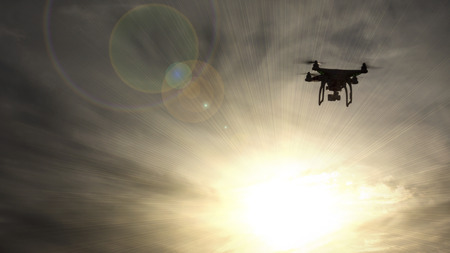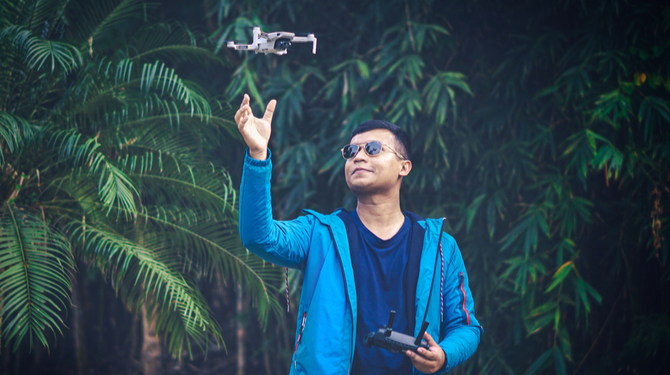Anne Swanson, a partner in Cooley’s Regulatory Communications practice and based in the Washington office, welcomes the new guidance issued by The Federal Aviation Administration (“FAA”) on the use of unmanned aircraft systems (“UAS”) at accredited educational institutions by students and faculty during instruction. In a clarification to guidance originally issued in June 2014, the FAA indicates that there are some situations when student and faculty use of UAS may qualify as “hobbyist” or model aircraft operations that do not require prior FAA authorization.
According to Swanson, “This guidance on the hobbyist exemption extending to educational establishments is a very welcome addition to a more liberal regulatory regime and will free up essential training as part of broader classes on UAVs.”
Students
In this latest memo, the FAA reviewed the principles of Section 336 of the agency’s 2012 reauthorization legislation (the FMRA), which provides special regulatory treatment for UAS operated as “hobbyist” aircraft. To qualify as a “hobbyist,” a UAV operator must meet several criteria, noted below, but most importantly, must have a non-commercial purpose, and the operation may not be indirectly incidental to any business or compensated activity.
In its latest clarification, the FAA said that students at accredited educational institutions may operate unmanned aircraft in accordance with the hobbyist exception as a component of their coursework, as long as UAS operation and flight training are not
the sole purposes of the course, that is, the course is not solely related to UAS flight training, and as long as the students do not receive compensation directly or indirectly from the activity. The FAA notes that students operating UAS as one component of a curriculum pertaining to broader principles of flight, aerodynamics, and airplane design and construction actually promotes UAS safe use and advances UAS- related knowledge, understanding, and skills.
Faculty
As a part of this coursework, the FAA also indicated that faculty may provide limited assistance to students operating unmanned aircraft under the same hobbyist exception, but only if UAS operation is a secondary component of the curriculum. A student must maintain operational control of the unmanned aircraft, although the faculty member is allowed to help regain control or to terminate the flight.
The FAA also said that a faculty member conducting research may not rely on Section 336’s concept of “hobby or recreational use” to operate a UAS or direct student UAS operations in connection with research. Likewise, a student operating UAS for research on behalf of a faculty member is associated with that faculty member’s professional duties and compensation, and, thus, the activity is not hobby or recreational use by the student pursuant to Section 336. Student operation
of the UAS for the professional research objectives of faculty renders the operation non-hobby or non-recreational.
Section 336 definition of “hobbyist”
As a reminder, to qualify as “hobbyist” use, a UAS must meet the following criteria, which also must be met to qualify for the benefits of this new guidance:
- Flown strictly for hobby or recreational use;
- Operated in accordance with a community-based set of safety guidelines and within the programming of a nationwide community-based organization;
- Limited to not more than 55 pounds unless otherwise certified through a design, construction, inspection, flight test, and operational safety program administered by a community-based organization;
- Operated in a manner that does not interfere with and gives way to any manned aircraft; and
- When flown within 5 miles of an airport, the operator of the aircraft provides the airport operator and the airport air traffic control tower (when an air traffic control facility is located at the airport) with prior notice of the operations (model aircraft operators flying from a permanent location within 5 miles of an airport should establish a mutually-agreed upon operating procedure with the airport operator and the airport air traffic control tower).
FAA authorization required for non-hobby or non-recreational use
When UAS operations do not qualify for the hobbyist exception, the operator must seek approval through one of the following avenues:
- As public aircraft operations pursuant to the requirements of the public aircraft statute and under a Certificate of Waiver or Authorization (COA) from the FAA;
- As limited commercial operations by type certificated UAS, provided the operator obtains a COA from the FAA; or
- Pursuant to a Section 333 of the FMRA grant of exemption based on the Secretary of Transportation’s determination that a certificate of airworthiness is not required, and provided the operator obtains a COA from the FAA.
The Big Picture
The industry is waiting with baited breath for the FAA to produce the full regulatory landscape. “The codified regulations, promised in late June, will bring a lot of confidence to the markets but it would be really optimistic to say they would be done by the end of June as meetings were still being scheduled in the of ce of regulatory review until the end of May,” said Swanson.
There is an ongoing conflict between Federal and local jurisdictions which does not seem to be going away anytime soon. In the last edition of Robotics Law Journal, we highlighted the regulatory landscape in California where different cities looked at drone regulation in quite different ways.
“Although, in a very broad brush, you could say that once a plane gets off the ground then the FAA takes over, there is a lot of tension between federal and state and local authorities over the regulation of UAS since state and local leaders are interested in meeting their constituents’ concerns related to UAVs, particularly in the privacy area,” added Swanson.


.jpg)
.jpg)
.jpg)

.jpg)

.jpg)

.jpg)
